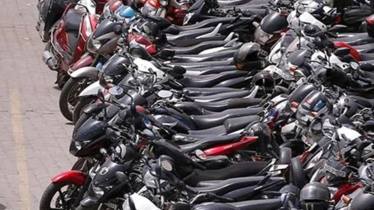The automotive retail sales in India across product categories (barring three-wheeler) has seen a decline or a flat growth in April. For the first month of FY2024, the overall retail sales came at 17,24,935 units, which was 4 percent lower compared to same period a year ago.
The passenger vehicle segment which has been on a dream-run saw a YoY decline after 8 months of consecutive growth. A total of 12,29,911 two-wheelers, 70,298 three-wheelers, 282,674 passenger vehicles, 55,835 tractors and 85,587 commercial vehicles were sold last month.
According to Manish Raj Singhania, President, Federation of Automobile Dealers Association (FADA) the, “Financial Year 2024 began on a subdued note, with the month of April experiencing a 4 percent YoY overall decline. Although the three-wheeler segment enjoyed robust growth of 57 percent YoY, Tractor and CV segments only grew by a modest 1 percent and 2 percent, respectively. Meanwhile, the two-wheeler and passenger vehicle categories experienced YoY degrowth of 7 percent and 1 percent, respectively.”
The industry body believes that the slowdown in two-wheeler sales can be attributed to limited supplies due to the OBD 2A shift, untimely rains, and pre-buying in March. The model mix availability, rural sentiment, and demand in the two-wheeler motorcycle segment remain weak. The rural economy has yet to show significant progress. In comparison to April 2019 (pre Covid-19 period) the two-wheeler sales was down by 19 percent.
In the three-wheeler segment, the demand for e-rickshaw and passenger segments helped retail sales grow by 57 percent YoY surpassing the pre-Covid levels at a healthy rate.
Coming to the passenger vehicle segment, which achieved record sales in FY 2023, there was a slowdown in April, with retails decreasing by a percent YoY. This was primarily due to last year’s high base and the OBD 2A norms, which led to retail price increases and advanced purchases in March. FADA says although supplies are improving, there is a significant mismatch between customer demand and available inventory. Furthermore, entry-level passenger vehicle have fewer buyers, suggesting that customers at the bottom of the pyramid are still hesitant to upgrade from two-wheelers to four-wheelers. For the first time in eight months, the PV segment witnessed a YoY degrowth, potentially signalling a tapering demand in this segment.
The CV segment maintained positive momentum with a 2 percent YoY increase in retail sales. However, dealers reported that vehicle availability was a major concern due to the OBD 2A norms. The low base from last year also contributed to the positive growth.
Reduction of GST on two-wheelers and outlook
The two-wheeler segment especially the entry-level models continue to face challenges. FADA has urged the GST Council to consider reducing GST on two-wheelers from the present 28 percent to 18 percent to help revive this vital segment, which represents 75 percent of total auto sales volume in the country.
On the other hand, the upcoming marriage season in May is expected to bring about a sales resurgence, driven by an increase in customer inquiries. Additionally, as electric vehicles (EVs) gain popularity, customers are increasingly considering transitioning from internal combustion engines (ICE) to EVs, which may temporarily delay purchasing decisions.
The commercial vehicle segment is witnessing strong demand in the M&HCV segment, supported by robust infrastructure projects taking place nationwide. Improved product supply from OEMs and customer adaptation to price shifts contribute to the segment’s growth.
In the passenger vehicle segment, rising inventory levels are raising concerns. FADA has urged OEMs to recalibrate their inventory and prioritise the production and supply of products that are in high demand, ensuring a more efficient alignment between market demand and available inventory.
This it says will ultimately benefit both customers and manufacturers. Despite the ongoing chip shortages and somewhat sluggish market conditions, the marriage season in May is expected to provide a slight boost in sales for the current month.
Unfavourable weather conditions persist in May, including untimely rains and hailstorms, causing crop damage in multiple states. This exacerbates concerns for farmers and may potentially impact entry-level two-wheeler and passenger car sales.
Considering these factors, FADA has maintained a cautious stance for May.
| CATEGORY | APR ’23 | APR ’22 | YoY % (2022) |
| Two-wheeler | 1,229,911 | 1,326,773 | -7% |
| Three-wheeler | 70,928 | 45,114 | 57% |
| E-RICKSHAW(P) | 31,653 | 18,522 | 71% |
| E-RICKSHAW WITH CART (G) | 2,732 | 1,611 | 70% |
| THREE WHEELER (GOODS) | 7,872 | 7,174 | 10% |
| THREE WHEELER (PASSENGER) | 28,618 | 17,753 | 61% |
| THREE WHEELER (PERSONAL) | 53 | 54 | -2% |
| Passenger vehicles | 282,674 | 286,539 | -1% |
| Tractors | 55,835 | 55,019 | 1% |
| Commercial vehicles | 85,587 | 83,987 | 2% |
| LCV | 43,501 | 47,625 | -9% |
| MCV | 6,451 | 5,575 | 16% |
| HCV | 32,165 | 28,558 | 13% |
| Others | 3,470 | 2,229 | 56% |
| Total | 1,724,935 | 1,797,432 | -4% |
